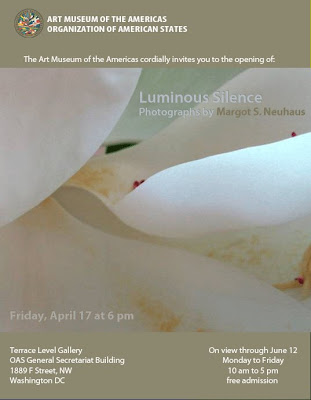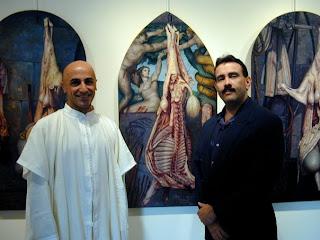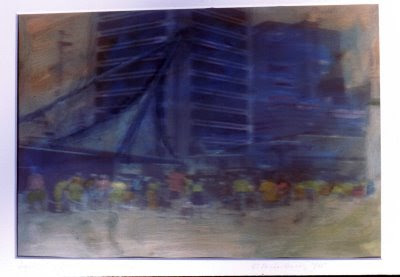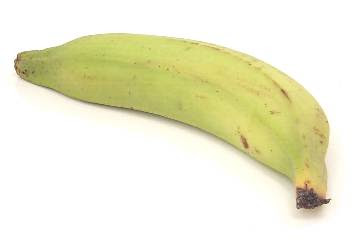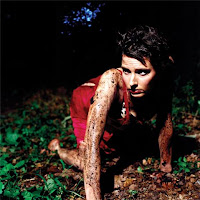Spring Break in NYC
By Robin Tierney
Here’s a cure for cabin fever: a recession-priced escape to Manhattan.
Look for a discount fare on the Amtrak Acela (tip: board the no-cellphone “Quiet Car”). Rate-surf for the New Yorker Hotel, an architectural classic one block from Penn Station. It completed a massive renovation in time for the economic bust, so you can get a bargain and colossal views. Next, buy a $74 CityPass that gets you VIP admission at a bunch of iconic venues, and a $7.50 FunPass for 24 hours of unlimited subway riding on days you don’t feel like walking, although walking’s easy from this central location.
Now, some quick takes from my long weekend of art-spotting.
Big venues are scrambling more than ever to lure more visitors. The Metropolitan Museum of Art hit the bell with its new “It’s Time We Met” ad campaign built on photos submitted by museum-goers. Winners got a couple hundred bucks and an annual pass. So if you dream of having work shown at the Met, instead of slaving over a hot canvas just click some whimsical scenes with your cellphone.
So I shouldn’t have been surprised when security sentry Guy Anglade told me that visitors have asked which way to the “We Met at the Met” exhibition. Anglade shook his head: “Forget Carravaggio, where are the Flickr photos?”

"Six-year-old emulating Edward Hopper! His own choice, said his mother."
By Robin TierneyThe supersized images are plastered on billboards, buses and fencing in front of the museum. Evidently in the social media age, there’s an unquenchable thirst for acts of cuteness executed against fine art. Imagine your life’s work functioning as a background for goof-shots.
One special exhibition revisited the debate that won’t die: “is photography art?” “Walker Evans and the Picture Postcard” arrested scores of onlookers during my visit with its documents of Americana arcana culled from the photographer’s collection of 9,000 postcards. For most of the cards, the photographers remain unknown, but several of Walker’s own postcard creations are on view. Through his 1936 experiments, he taught himself to crop for maximum clarity and intensity. Walker then worked decades to free this humble genre from the pigeon-hole of nostalgia and get respect as an art form.

Walker Evans (American, 1903–1975) View of Easton, Pennsylvania (variant), 1935 Postcard format gelatin silver print 8.6 x 13.7 cm (3 3/8 x 5 3/8 in.)Whatever you call them, their allure overpowers: viewers studied b&w and hand-colored portraits of beach towns, main streets, train depots, river ports, windswept cliffs, hometown jubilees, fan-dancers, sanitarium patients. The alchemy of documentary and lyricism includes original Coney Island amusements (“Atlantis, the Sunken City”), San Francisco’s Valencia Hotel vaulted out into the street by an earthquake, even an electric chair at Sing Sing prison.
The postcard exhibition closes May 25; check out curator Jeff Rosenheim’s terrific catalog.
Across the hall, I caught the final day of “Reality Check: Truth and Illusion in Contemporary Photography.” Interesting selections included faux-to-journalist David Levinthal’s staged battle using toy soldiers, flour and plastic bags shot using a very narrow depth of field. Mark Wyse documents a squirrel ignored in the road after falling to his death in his “Marks of Indifference” series.
Downstairs, “Pierre Bonnard: The Late Interiors” offered an opportunity to observe the graphic shorthand of dots, dashes, loops, spirals and zigzags the modernist used to record images and to compose paintings.
Make time to meander in Central Park.
Just south of the park you can overdose on eccentricities all day at
MoMA (AKA the Museum of Modern Art). Sleep-deprived, I lacked the patience to mine for meaning in the temporary exhibitions that left me plagued by an earworm of “You Gotta Have a Gimmick” (from “Gypsy”). Such as Klara Liden’s projects, partly due to the medium designation of “interventions.” And a performance artist’s self-imposed year-long confinement to a cell. “Four Decades of Contemporary Art” felt like a Target commercial on drugs.
The ennui evaporated once I remembered to fetch my MoMA audio tour.
It’s worth scaling the steps for the survey spotlighting Martin Kippenberger, who has lambasted the vagaries of modern culture in nearly every medium. Consider “Psycho buildings” and the sprawling recession-ready installation presenting job interview as sporting event, complete with bleachers and cheerleaders.
MoMA admission gets you a free all-day ticket to use when you wish at P.S.1, the contemporary/indie art haven two subway stops east in Queens.

"Cheerful New York Graffiti in Building near P.S. 1"
By Robin TierneySpeaking of gimmicks, even art-grumps might crack a smile at the swimming pool that mixes false bottom with false illusions. Darker spectacles play out on dual-sided screens showing Kenneth Anger’s surrealistic brain dumps. His lyrical 40s-style b&w “Faux D’Artifice” held me spellbound while others crowded before flickering frames of Coney Island biker escapades in “Scorpio Rising.”
Jonathan Horowitz commanded a bunch of spaces with jarring works in a range of media. Player piano playing songs from the Who’s “Tommy” paired with disturbing clips from “The Miracle Worker” and other movies. Commentary amusing and sinister about politics and celebrity, the universal appeal of violence and scandal, and imperialism as foreign policy and entertainment from the Roman Empire onward. It’s interesting. Really.
Watching Yael Bartana’s videos of vehicles eerily coming to a stop on a dark highway made me contemplate the narcotic effect of film, especially after I nodded off for an uncertain duration until a lady guard told me it was closing time.








